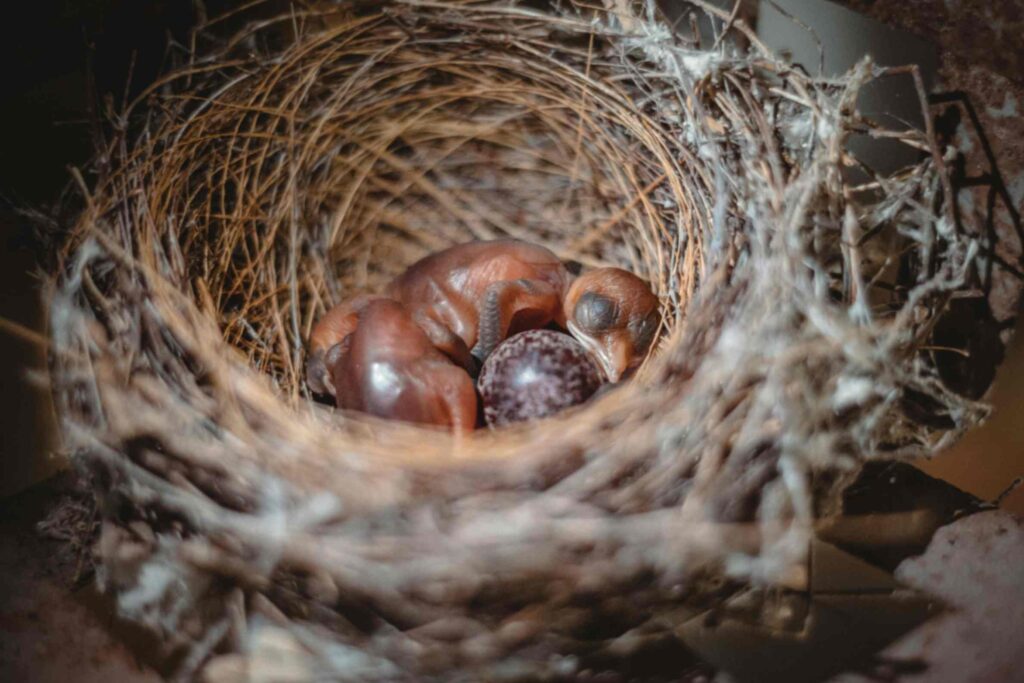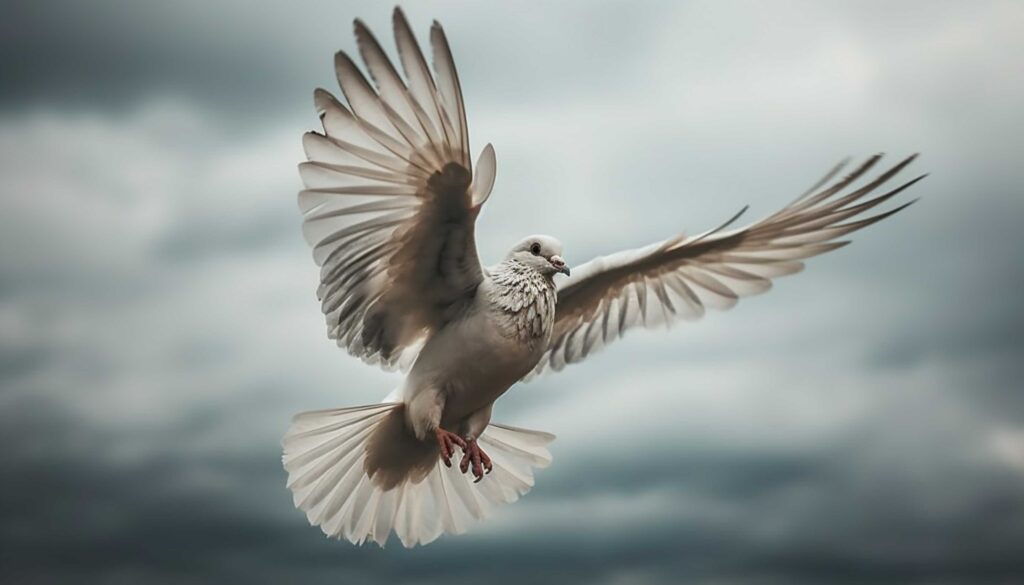Where Are Baby Pigeons?
The reason you rarely see baby pigeons lies in their unique behavior and development. Unlike many other bird species whose young are often spotted out in the open, pigeons raise their young in very secluded areas. Pigeons are highly secretive when it comes to nesting and nurturing their babies, choosing well-hidden locations that are rarely visible to humans.

1. Nesting Habits of Pigeons
Pigeons lay their eggs at a high place where there is little human access and needs a roof to cover it. They usually are such places as building ledges, attics, underside of bridges, or in the cracks of structural designs. It is an excellent place for breeding because these out-of-sight areas shield the baby pigeons from predators and people. This is why, when it comes to finding a nest full of squabs, you’ll be hard pressed to do so almost all the time.
Pigeons are undisturbed birds and build their nests where people cannot approach or even see them. They could build their nests on window sills, in deserted structures or on the roof tops, part of structures that are normally taken for granted.

2. Extended Nesting Period
Unlike most of the bird species, the pigeons do not abandon the nest soon after hatching. The baby pigeons are quite dependent and are unable to fly, they remain in the nest for a long time— 4 to 6 weeks before they grow to size almost equal to that of adult pigeons and have all fledged feathers. When the pigeons are fledging, they seem to be looking like grown up birds already since they are so fully feathered. This is why one cannot find a small and fluffy baby pigeon straying around the streets and in fields. The young of the pigeons only come out after they have grown up to their age that they will not die from outside the nest.
This long period of incubation ensures that the squabs are in a better position to flying and survival in the open world. But when they arrive, they are almost as large as adult pigeons in size and structure too, are very similar.
What Do Baby Pigeons Look Like?
This however is not frequent and baby pigeons do have certain characteristics which make it easy to tell that they are in that age bracket and not fully grown birds. Young squabs are sometimes covered with yellow or white down; they do not have very graceful appearance, their beaks are large while wings are still in the process of development. But when they grow up to the point when it is ready to leave the nest, then they will now look like pigeons more than anything else. They may seem a bit unkempt or even have slightly fluffy feathers, but their size and general appearance will make anyone think that these bird s are full grown pigeons.
Why Don’t Pigeons Leave the Nest Earlier?
The growth of pigeons takes more time as compared to other birds more so the baby pigeons. For example: There are many tiny birds such us sparrows or robins that fledge after 2-3 weeks of hatching and at this stage, fledglings can be observed learning how to fly or just hopping under the trees. However pigeons do it slowly and they take their time.
It is advantageous that pigeon take time to mature, this is a characteristic that has been genetically built in the pigeon. If they hatch and remain in the nest for long they have less chances of being attacked by felines or other birds of prey or even other birds that are aggressive in nature. This is a survival strategy, which implies that the young ones can only leave the nest after they are strong and strong enough to fly and also to defend themselves, hence they are not as vulnerable as the fledglings of other species.
Why Adult Pigeons Are So Common
Male pigeons are often depicted as shy and do not expose themselves during the times when they have babies while the baby pigeons are still immature they are hidden while the adult pigeons seem to be all over. This is so because pigeons are so versatile especially in the sub-genus known as Columba livia that they can feed in the most urban areas. The domestic pigeon has no many enemies in urban environment, an abundance of food and prospective roosting places. These facts have favoured growth of pigeon numbers especially to get big sizes of adult pigeons we see today.

Add Your Heading Text Here
1. Urban Environment: A Pigeon Paradise
Places where pigeons exist in large number are cities because there’s always food to be found. Pigeons are considered as opportunistic feeders; therefore, they have the tendency to feed on any substances they come across including Afro Caribbean food leftovers, seeds among others. Also, urban structures provide a large number of possibilities for habitat choice, for instance, it is possible to find nests on roofs, bridges or in deserted buildings that will provide the birds with the possibility to protect their offspring. These factors such as ready availability of food and nest sites in cities hence make pigeon populations to thrive relentlessly.
2. Pigeons Breed Year-Round
This is particularly interesting given the fact that pigeons unlike many other bird varieties which breed during one season can do so throughout the year if only enough food and warmth are available. This means they are always rearing young pigeons; thereby adding to their flock; thus, the name ‘White City’. It is common knowledge that the mother pigeon lays eggs then hatches her chicks and within a few days many adult pigeons are produced; nevertheless, for some reason the young pigeons are not immediately visible until they grow up to the full size of adult birds hence the riddle on the baby pigeon you cannot see them!
The Life Cycle of a Pigeon
It is for this reason that you will rarely find baby pigeons Although the pigeon has various life cycles that will make man embrace the pigeon, it is very hard to see babies pigeons. Here’s a brief overview of the process:Here’s a brief overview of the process:
- Eggs: Pigeon hen starts to lay one or two eggs in the nest. The common eagle’s nestlings are hatched by both parents over a period of approximately 54 hours after which the eggs are incubated for about 18 days.
- Hatching: Squabs, or baby pigeons which have emerged from their eggs are usually fed by their parents. In the first couple of days of their lives the young are fed with crop milk, which is a secreted viscous substance.
- Growth: Fledgling pigeon is mature very fast but they will still depend on the nest for 4-6 weeks. At this age they grow feathers, get bigger and begin to learn how to fly.
- Fledging: Fully-grown pigeons are rather large birds, and while still staying in a nest, baby pigeons are as big as their adult counterparts. They have learned almost all their flying and other skills which enhance their survival at this age.
- Adulthood: Once the pigeons fledge away from the nest or the parent bird, pigeons are capable to start breeding at the age of six months and reproduce.
The Fascination Behind the Mystery
The mystery of why we never see baby pigeons has intrigued many people, but the answer is rooted in simple biology. Baby pigeons stay hidden in nests until they are fully mature and ready to survive on their own. By the time they emerge into the urban environment, they look almost identical to adult pigeons. Combine this with their secretive nesting habits and long maturation period, and it becomes clear why baby pigeons are such elusive creatures.






